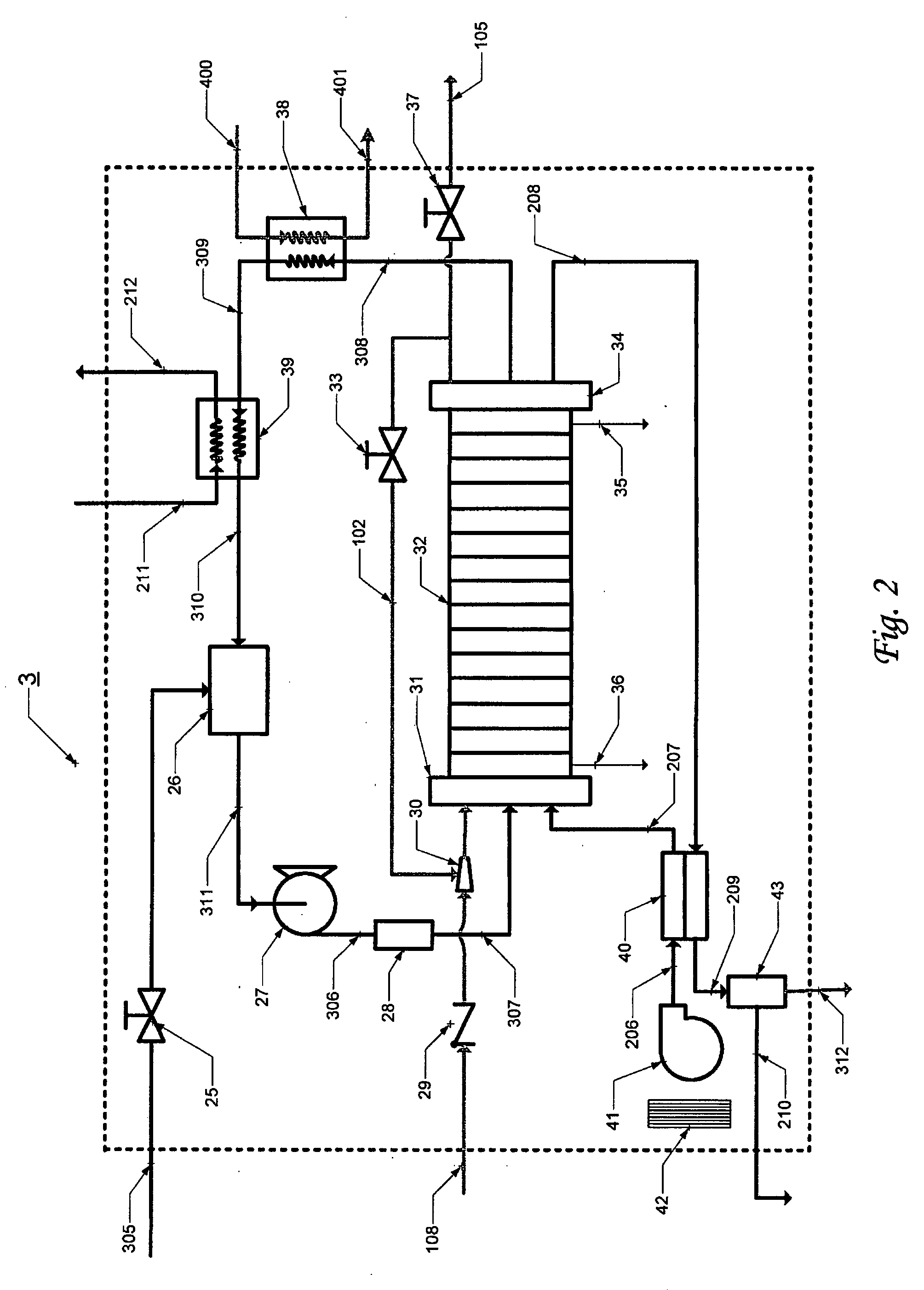Fuel cell combined heat and power generation
a fuel cell and combined heat technology, which is applied in the field of fuel cell combined heat and power generation, can solve the problems of insufficient thermal energy recovered from a fuel cell system in terms of hot water quantity or temperature, the heat demand of space heating and hot water can exceed the supply of energy available from the fuel cell stack plus the fuel processor assembly, and the two typical cogeneration systems discussed above are not suitable. , to achieve the effect of low fuel utilization efficiency
- Summary
- Abstract
- Description
- Claims
- Application Information
AI Technical Summary
Benefits of technology
Problems solved by technology
Method used
Image
Examples
Embodiment Construction
[0029]Referring first to FIG. 1, there is shown an exemplary hydrocarbon fuelled PEM fuel cell system 10 for producing heat and electric power according to the present invention. The combined heat and power generation system 10 includes: a fuel processing module (FPS) 2 to produce a hydrogen-rich reformate from hydrocarbon fuel; a fuel cell power generation module (FCS) 3 to produce power and heat; and a heat recovery, or cogeneration, module (HRS) 5 to recover heat produced by the fuel cell power generation module 3 and / or fuel processing module 2 for providing domestic hot water and / or space heating.
[0030]In the exemplary embodiment, an optional power conversion and conditioning module (PCS) 4 to convert the electricity produced into utility grade electricity is also shown.
[0031]In the embodiment of FIG. 1, the modules shown can be independent devices, manufactured independently and marketed as a fuel processor for hydrogen production, a fuel cell power generator run with pure hyd...
PUM
 Login to View More
Login to View More Abstract
Description
Claims
Application Information
 Login to View More
Login to View More - R&D
- Intellectual Property
- Life Sciences
- Materials
- Tech Scout
- Unparalleled Data Quality
- Higher Quality Content
- 60% Fewer Hallucinations
Browse by: Latest US Patents, China's latest patents, Technical Efficacy Thesaurus, Application Domain, Technology Topic, Popular Technical Reports.
© 2025 PatSnap. All rights reserved.Legal|Privacy policy|Modern Slavery Act Transparency Statement|Sitemap|About US| Contact US: help@patsnap.com



